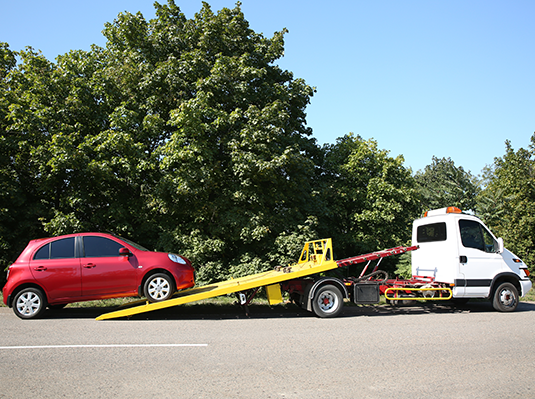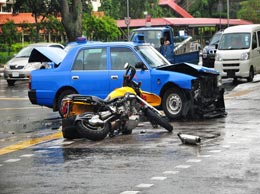
Being in a serious accident is a terrifying experience. Seeing the damage to your car and possibly even being injured is enough to upset most people, but if the other driver doesn’t have insurance the situation can quickly go from bad to worse. How are you going to pay for the damage to your car? Will your health insurance cover the cost of your medical bills?
What does uninsured motorist coverage pay for?
Uninsured motorist coverage (UM) and underinsured motorist coverage (UIM) are designed to protect you financially if you are hit by another driver who doesn’t have insurance or doesn’t have enough insurance to cover your bills. This type of coverage is typically sold as an add-on to your basic insurance coverage, but many states have laws that require you to carry UM/UIM so it may or may not be automatically included in your insurance coverage, depending on where you live.
Uninsured motorist coverage typically breaks down into three parts:
- Uninsured motorist bodily injury coverage: This pays your medical bills if you are hit by someone who doesn’t have insurance. Depending on the specifics of your policy, this coverage could also cover passengers in your car who were injured in the accident.
- Uninsured motorist property damage coverage: This pays to repair your vehicle if you are hit by an uninsured driver. This type of UM coverage isn’t necessarily available in every state, so you will want to speak with an insurance expert if you have questions about whether or not this type of coverage is available to you.
- Underinsured motorist coverage: This pays your medical bills if you are hit by someone who causes more damage than their insurance will cover. For instance, a driver who has liability levels of 25/50/20 is only covered for up to $25,000 in bodily injury coverage per person, $50,000 per accident. If you are hit by someone with these levels of liability coverage and you end up with $100,000 in hospital bills, you could end up fighting them in court for years over the other $75,000 their insurance wouldn’t cover. Given that some states have minimum bodily injury liability levels as low as $10,000 to $15,000, it doesn’t take much to go beyond that level of coverage.
In most cases, insurance companies won’t allow you to carry more UM/UIM coverage than your own liability limits. This means that if you want high levels of UM/UIM coverage you will need to increase your liability limits, too.
Most insurance experts recommend carrying at least 100/300/100 in liability coverage. This is designed to protect you financially in the event of an accident — what if you hit someone and they have to be in the hospital for several days, or you hit a car with a family of four inside and they all need medical care? This is also the level of UM/UIM coverage most insurance experts recommend as well, and for similar reasons. You want to be protected in case an accident puts you in the hospital for several days or you have multiple passengers who all need medical care.
Is uninsured motorist coverage required by law?
UM/UIM is required by 20 states and the District of Columbia. Most other states offer it as a potential add-on to your auto insurance policy.
At this time UM/UIM coverage is required in Connecticut, Illinois, Kentucky, Maine, Maryland, Minnesota, Nebraska, New Jersey, New York, North Carolina, North Dakota, Oregon, South Dakota, Vermont, Virginia and West Virginia. State laws change regularly, however, so it is important to review your state requirements with a Goosehead Insurance expert who can help make sure your coverage levels meet your needs.
What happens if I reject uninsured motorist coverage?
If you live in a state where UM/UIM coverage is not required you can choose not to purchase the coverage, but this is a risky decision. In 2019, approximately 13% of drivers did not have insurance. These numbers are based on a national average, which means some states had much higher rates of uninsured drivers. For example, 29% of drivers in Mississippi were driving uninsured in 2019, which means drivers in the Magnolia state had more than a 1 in 4 chance of being in an accident with an uninsured driver.
If you are hit by an uninsured or underinsured driver and you end up with significant medical bills your only recourse may be to take them to court to cover the costs. If you were hit by someone who doesn’t have any assets or a steady paycheck it might not matter if you sue them over the damages — the courts can’t take something that someone doesn’t have, so you could still be left with nothing at the end of a difficult and expensive legal battle.
Do I need uninsured motorist coverage if I have Medicare or health insurance?
Medicare and health insurance are both great ways to protect yourself financially, but they aren’t substitutes for UM/UIM for several reasons, including:
- Policy limits: Medicare and health insurance both come with a variety of limitations and exclusions. Oftentimes these policies are so difficult to navigate that people don’t have any idea what is and isn’t covered by their policy until they have already received medical services. Carrying UM/UIM coverage helps prevent you from being surprised by uncovered medical expenses.
- Lost wages, pain and suffering: UM/UIM can also include coverage for things beyond your immediate medical needs, including lost wages as well as pain and suffering.
- Passengers: You may have Medicare or health insurance, but what about your passengers? UM/UIM protects everyone in your vehicle, not just the driver.
Given all of the benefits, you shouldn’t reject uninsured motorist coverage just because you have health insurance.
Do I need uninsured motorist coverage if I have comprehensive and collision coverage?
Comprehensive and collision coverage will pay for damages to your vehicle in an accident, whether or not you were at fault. If you have comprehensive and collision you may not need UM/UIM property damage coverage, but neither comprehensive or collision insurance will cover bodily injury.
Does uninsured motorist insurance cover a hit and run?
There are more than 682,000 hit and run accidents every single year in the United States, so it is important to protect yourself financially against the possibility. Your UM/UIM benefits typically cover damage caused by a hit and run driver, but this can vary from state to state and policy to policy.
The best way to make sure you are covered against a hit and run is to check with an insurance expert who can help you understand your UM/UIM benefits and make sure you have all the coverage you need to protect yourself on the road.
The contents of this article are for informational purposes only. You should not act or refrain from acting based on this information without first consulting a Goosehead licensed agent at [email protected]. We disclaim all liability for actions taken or not taken by you based on the contents of this article which is provided "as is." Goosehead makes no representation that this content is error-free.


